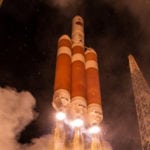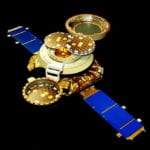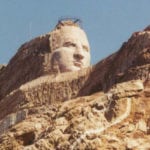 Music
Music  Music
Music  History
History 10 Less Than Jolly Events That Occurred on December 25
 Weird Stuff
Weird Stuff 10 Funny Ways That Researchers Overthink Christmas
 Politics
Politics 10 Political Scandals That Sent Crowds Into the Streets
 Weird Stuff
Weird Stuff Ten Bizarre Facts About The Doge Meme
 Our World
Our World 10 Ways Your Christmas Tree Is More Lit Than You Think
 Movies and TV
Movies and TV The 10 Coolest Stars to Set Sail on The Love Boat
 History
History 10 Things You Didn’t Know About the American National Anthem
 Technology
Technology Top 10 Everyday Tech Buzzwords That Hide a Darker Past
 Humans
Humans 10 Everyday Human Behaviors That Are Actually Survival Instincts
 Music
Music 10 Surprising Origin Stories of Your Favorite Holiday Songs
 History
History 10 Less Than Jolly Events That Occurred on December 25
 Weird Stuff
Weird Stuff 10 Funny Ways That Researchers Overthink Christmas
Who's Behind Listverse?

Jamie Frater
Head Editor
Jamie founded Listverse due to an insatiable desire to share fascinating, obscure, and bizarre facts. He has been a guest speaker on numerous national radio and television stations and is a five time published author.
More About Us Politics
Politics 10 Political Scandals That Sent Crowds Into the Streets
 Weird Stuff
Weird Stuff Ten Bizarre Facts About The Doge Meme
 Our World
Our World 10 Ways Your Christmas Tree Is More Lit Than You Think
 Movies and TV
Movies and TV The 10 Coolest Stars to Set Sail on The Love Boat
 History
History 10 Things You Didn’t Know About the American National Anthem
 Technology
Technology Top 10 Everyday Tech Buzzwords That Hide a Darker Past
 Humans
Humans 10 Everyday Human Behaviors That Are Actually Survival Instincts
10 Dirty Little Secrets From NASA
Conspiracy theorists worldwide speculate on the many presumed secrets of the National Aeronautics and Space Administration, or NASA. In its 60-year history, the notoriously secretive government-affiliate has been accused of everything from staging the Moon landing to covering up signs of alien life and even spending millions to produce a “space pen.”
NASA may have endless teams of experts and a PR department at the ready to debunk those myths, but through the years, a few dirty little secrets have come to light. While some appear irrefutable and others still boast some camps of speculation, the secrets confirm that those working at the space agency are, in fact, only human after all.
10They Accidentally Recorded Over The Original Tapes Of The Apollo 11 Moon Landing

Conspiracy theorists have accused NASA of staging the Moon landing since the day the footage aired on live TV. So in 2006, when NASA admitted that no one could find the original video recordings of the 1969 landing, suspicions that it was all just one big hoax wildly reignited. One Russian official even weighed in, calling for an investigation.
The agency’s story remains firm, however. According to Reuters, in 2004, an archive in Sydney confirmed to NASA that it had located the missing videos. This proved false but set in motion a global search for the missing footage. With its recovery, NASA hoped to produce sharper images of the landing than those broadcast, which were produced by a TV camera pointed at a monitor.
Today, most experts at NASA believe the tapes are long gone. The culprit? Budget cuts. It was standard procedure through the ’60s and ’70s to reuse the tape reels after a certain number of years in storage. The originals were likely part of a batch of up to 200,000 tapes that were magnetically erased.
What has been saved over the years? In 1972, astronaut John Young developed a major case of gas while standing on the Moon. He had accidentally left his microphone on, and NASA recorded his discussion on what all the fruit was doing to his intestines. This same astronaut was also recorded while eating a corned beef sandwich he had smuggled aboard a separate mission, which, when shared with his copilot, began to crumble and fly around everywhere, threatening to get behind the electrical panels and short-circuit wiring.
9They Secretly Harbored Former Nazi Scientists After World War II

Anyone who’s taken a history class can attest that international behavior after World War II was a bit murky. Amid this chaos, the CIA was hard at work on “Operation Paperclip,” a covert project to populate the US Space, Military, and Technology programs with Nazi scientists.
The official objective of the operation was to prevent Nazi scientists from being taken by the Soviet Union. The report discloses that a document was recovered in Germany called the Osenberg List—a catalog of scientists and engineers who worked for the Nazis. The US subsequently brought over 1,600 of those German scientists and their families to work for America, developing everything from supersonic rockets to nerve gas and guided missiles.
When the details of the operation were made public, the reaction was split. Some suggested how the world could be a very different place if the Nazi technology fell into the hands of the Soviet Union, and we cannot overlook the scientists’ breakthroughs and contributions. However, many others noted the hypocrisy between the covert Operation Paperclip and the very public Nazi trials occurring in Germany, and that the scientists escaped their war crimes without reprimand or responsibility.
8Their Intern Stole Moon Rocks And A Meteorite From Mars And Had Sex On Them
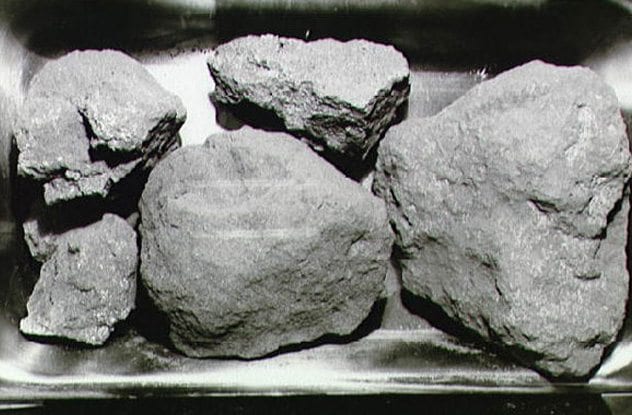
In 2002, a NASA intern named Thad Roberts was just another boy trying to impress his girlfriend. The duo and a third accomplice broke into Johnson Space Center and made off with more than 600 pounds of moon rocks. Roberts and his associates tried to sell the rocks on the black market, where they were valued at $21 million, but not before the couple sprinkled the rocks across a bed and had sex on top of them.
The three interns were ultimately caught and pleaded guilty, and Roberts was sentenced to eight years in prison. The penalty was served in part due to the episode contaminating the rocks, rendering them useless for research, and their destruction of decades’ worth of handwritten notes during the robbery.
On the bright side, while incarcerated, Roberts created a theory that could unite Einstein’s relativity and quantum mechanics.
7They Denied Insurance To The Apollo Astronauts
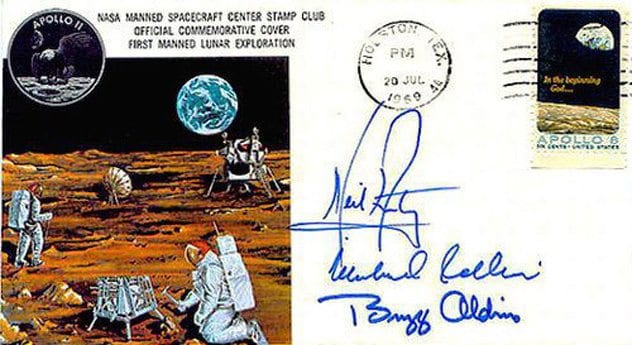
Considering how astronauts are experts in engineering, biology, mathematics, physical science, mechanics, piloting, and really whatever else may be pertinent to a mission, it’s unsurprising that they understand a little thing called supply and demand.
In the months leading up to the legendary Apollo 11 launch, Neil Armstrong and his crew signed hundreds of autographs, but most notably were the “covers,” or envelopes signed and postmarked on important dates.
When NASA fell short on the astronaut’s life insurance policy, the men sent signed covers to their friends and families, so they could sell them in the event of disaster. Their actions were warranted as well—reports say that NASA already had a plan in place to sever communication with the Apollo 11 if the astronauts became stranded on the Moon. Nixon even had a pre-written speech.
Even as recent as 2003, NASA had no special insurance for its astronauts. When the Challenger mission exploded mid-flight, the families of the deceased received the standard federal life insurance payout but nothing more. The good news is that with space tourism consistently teased on the horizon, some private companies are ready to cover your own anti-gravity adventure.
6Their Former Astronauts Don’t Always Have A Happy Return

The NASA astronaut program is notoriously difficult. Following decades of preparation academically and professionally, candidates are required to have specific predisposed physical traits as well. That’s not to mention the insane job competition. There have been a total of 257 astronauts since the program’s inception, and provided you meet the criteria, your chance of being selected is still only 0.8 percent. This is all even before committing to undertake one of the most grueling jobs in the world. Adjustment post-mission has not been easy for all.
Following the return of Apollo 11, Buzz Aldrin had a difficult return to everyday life. He left NASA, got divorced, remarried, divorced again, suffered depression and alcoholism, had a failed stint with the Air Force, and wound up as a Cadillac salesman (and not even a very good one; he lasted six months as a salesman without a single car sold). Fortunately, today, Aldrin is sober, once again married, and living a happier life.
Other astronauts met similar fates. Lisa Nowak was charged with attempted murder for attacking a romantic rival following her return to civilian life, and Jim Irwin devoted his life to finding Noah’s Ark following his return from the heavens. One engineer even wrote multiple books published between 1988 and 1996 predicting the Rapture.
5 . . . But Some Do Go On To Succeed
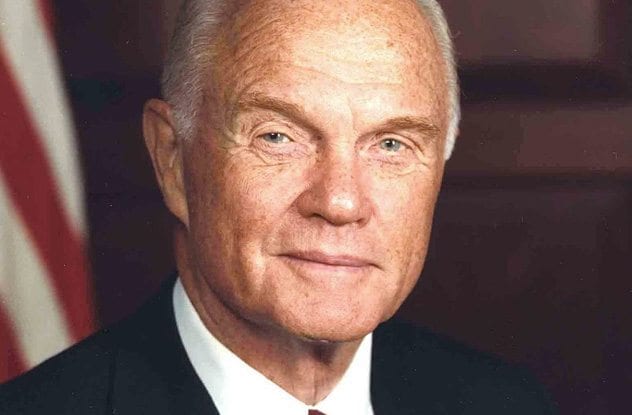
It’s not all gloom and doom after you’ve seen the stars, however.
John Glenn went on to become a state senator in Ohio for a quarter of a century and even ran for president in 1984. Story Musgrave has worked as a concept artist for Disney’s Imagineering team and owns a sculpture company in California, and Scott Parazynski summited Mount Everest. The inventor of the Super Soaker squirt gun was also NASA scientist who also helped develop the Stealth Bomber.
4Their Astronauts Drink Their Own Urine
Scientists developed a way for astronauts to recycle and condensate the crew’s collective breath and sweat, shower runoff, and urine from animals, turning all those into drinking water.
The system recycles about 6,000 liters of water for the station each year and produces more than the ionized silver–based system of the Russians. The Russian cosmonauts apparently refuse to drink the reclaimed urine-water. The astronauts aren’t bothered by their counterparts’ judgment. Reportedly, they simply use the Russian urine, too.
The astronauts also have special training in how to poop properly in zero gravity. Because of the weightlessness experienced, toilets on the space station require fans to create suction, allegedly a huge improvement from the method of the early shuttle days—using adhesives to fix collection bags to their behinds.
3Astronauts Are Taught To Restrain Others With Duct Tape
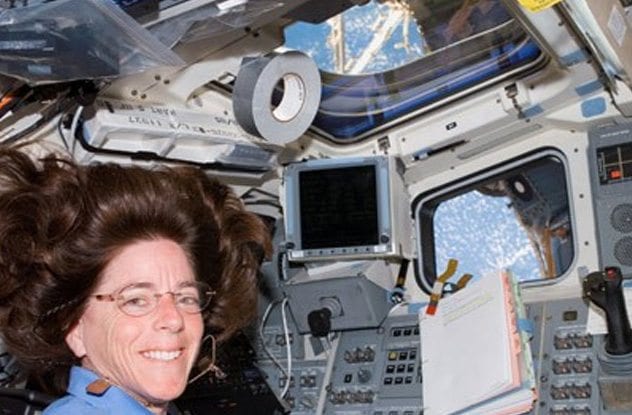
We’ve all experienced that cabin fever that sets in while housebound during inclement weather. Now imagine months of your obnoxious roommate’s most offensive habits. Ever prepared, NASA has an official procedure in case an astronaut goes completely nuts while on a mission. According to the documents, “the astronaut’s crewmates should bind his wrists and ankles with duct tape, tie him down with a bungee cord, and inject him with tranquilizers if necessary.” The document is part of a space station checklist with instructions for every possible medical emergency.
That advice, however, is as far as the instructions go. Any incident would be handled on a case-by-case basis.
There is no official protocol in the event of death, however. Prior to launch, members of a mission will participate in a “death sim” workshopping the scenario.
2They’ve Been Accused Of Using Whale Oil In Its Satellites
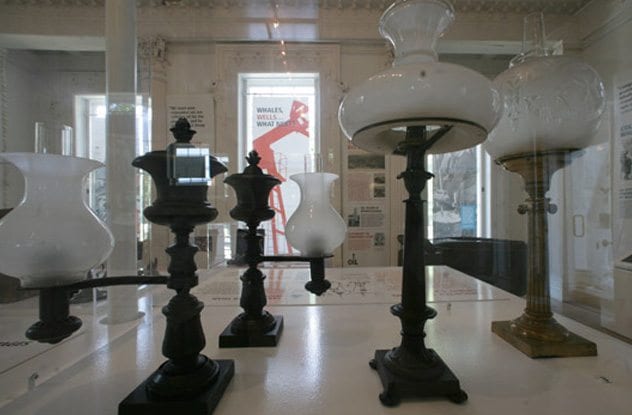
This myth generated attention when The History Channel aired episode four of its miniseries America: The Story of Us. The documentary claims that “even today, whale oil is used by NASA. The Hubble Space Telescope runs on it.”
NASA responded to the documentary immediately, asserting that they absolutely do not use whale oil in its Hubble telescope. Speculation continues, however, that whale oil must have been used at some point during space exploration. It doesn’t freeze in sub-zero temperatures, retains its density even under extremely high pressures, and no known natural substance can be substituted.
The International Whaling Commission banned commercial whaling in 1986, and the oil’s commercial popularity waned long before that, with the rise in popularity of petroleum. It’s unlikely the agency uses pure whale oil today but instead perhaps uses a synthetic lubricant to mimic the effects.
Are some of the planet’s early satellites powered in part by the Earth’s largest creature? The fishy dilemma is still up for debate. What we do know, however, is that whale oil was at its peak consumption in the 1850s—almost an entire century before NASA was even established.
1They Know Nothing About Women

NASA’s still predominantly a boys’ club, but the involvement of women in the space program has improved steadily over time. The agency sponsors outreach programs targeted at women and girls, and in 2016, NASA’s incoming class was 50 percent female—a landmark for the program. A 2016 Academy Award–nominated movie, Hidden Figures, even popularized the story of three real-life African-American women who were part of NASA’s team of human computers during the first missions.
Considering that fields like engineering and physics are still overwhelmingly male-dominated, there is evidence that women are still a mystery to many at NASA. No evidence is stronger than when a group of engineers had to pack for Sally Ride, the first female astronaut.
Reportedly, the engineers asked Ride if 100 tampons were enough for her seven-day trip to space. As an extra thoughtful gesture, they also packed the tampons with their strings connected so that they wouldn’t float away.
These days, those engineers needn’t worry. NASA encourages female astronauts to practice the continuous-pill method to suppress their periods, as the waste disposal system onboard are not designed to handle the menstrual blood. For long-term travel, a stockpile of contraceptive pills takes up far less space than that a mountain of tampons.
Leslie is a scuba diving instructor and aspiring marine biologist working in conservation in the Gulf of Thailand.


